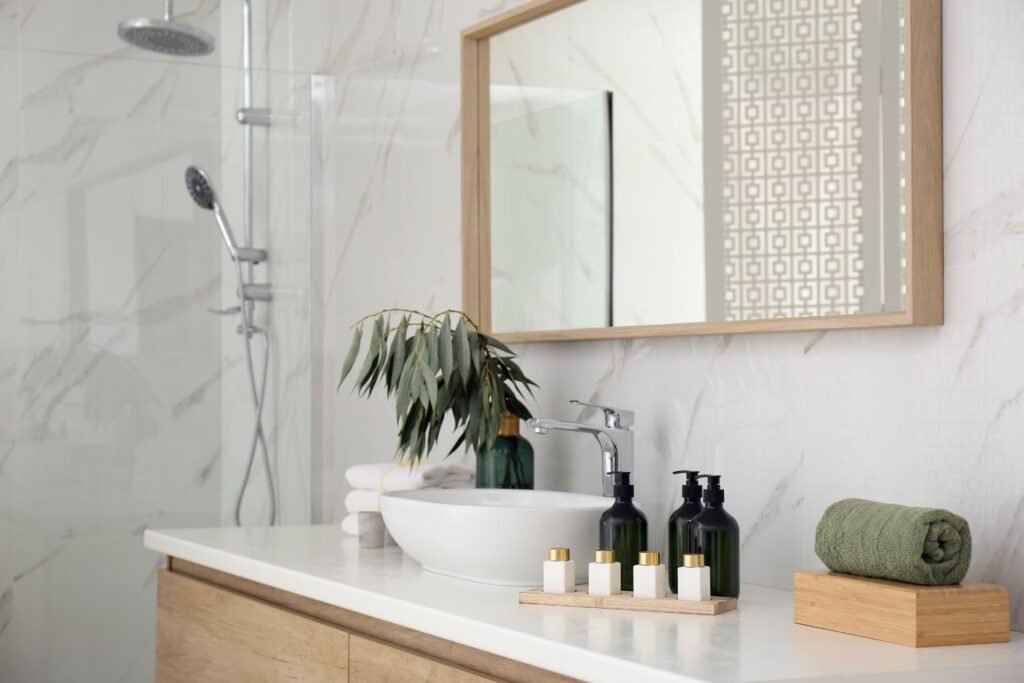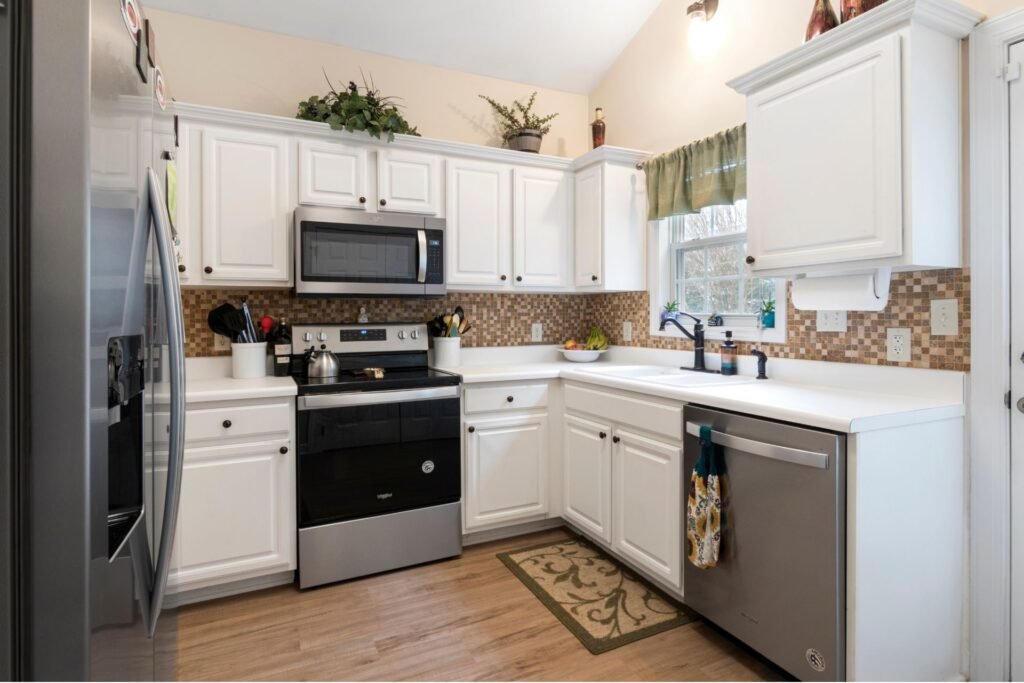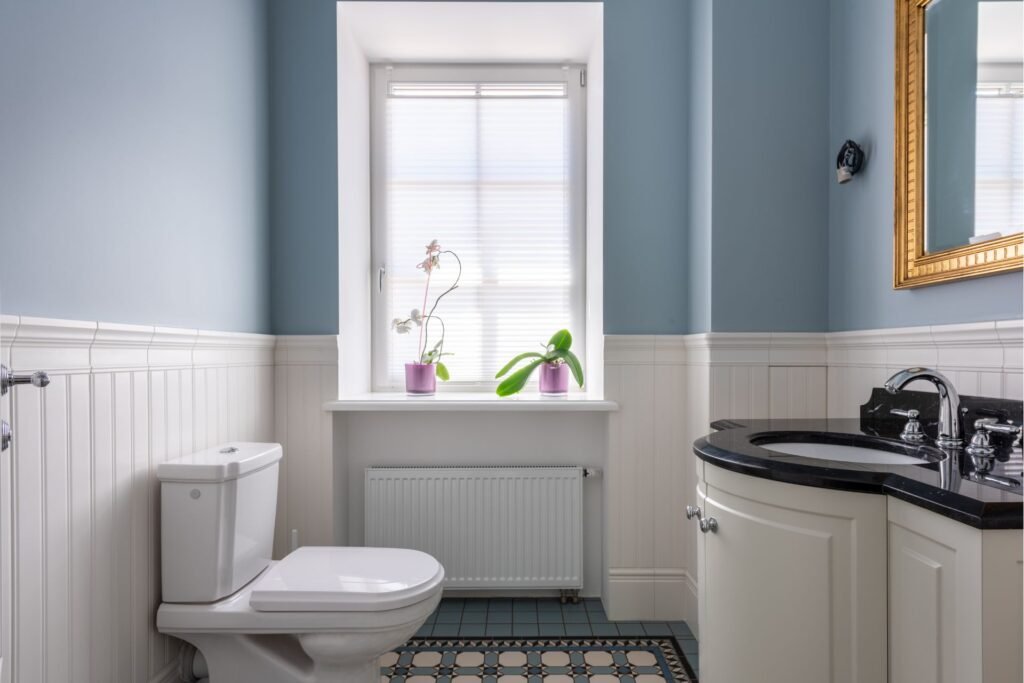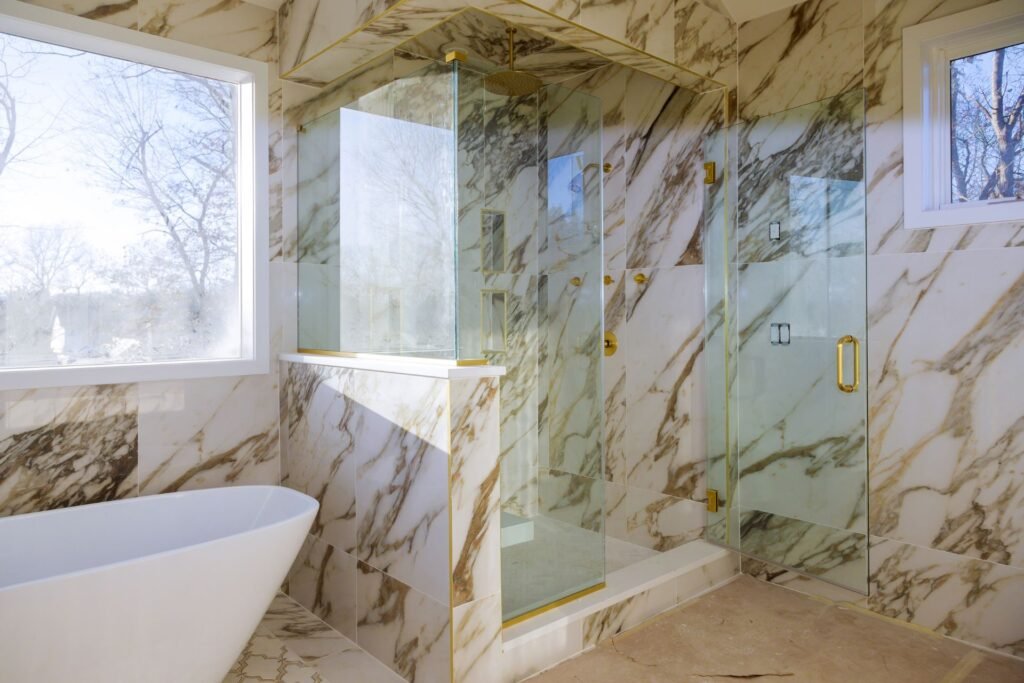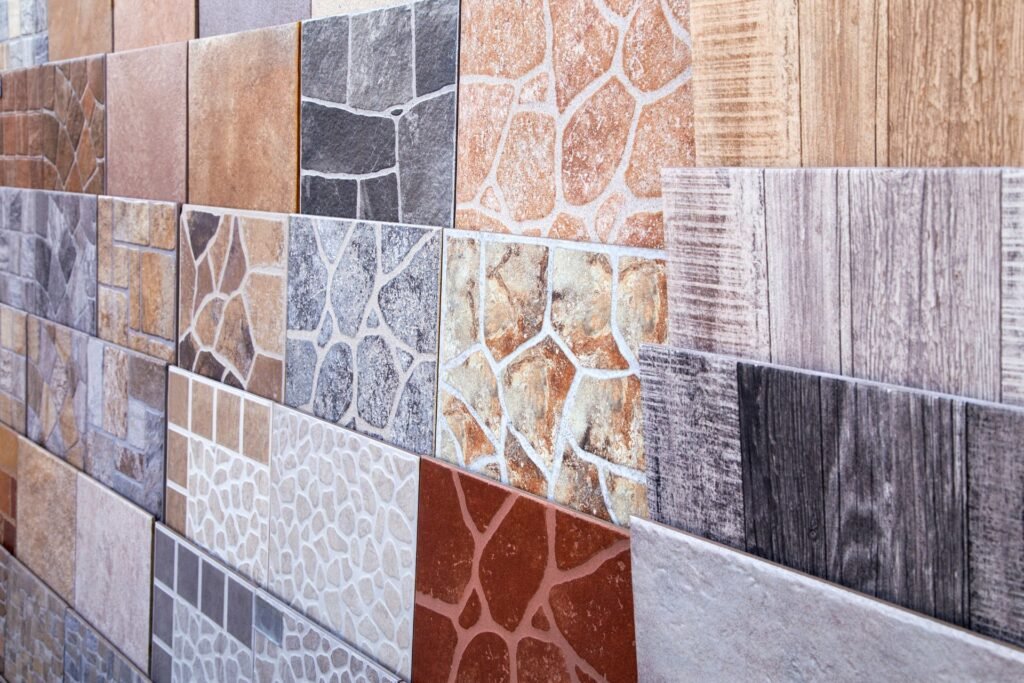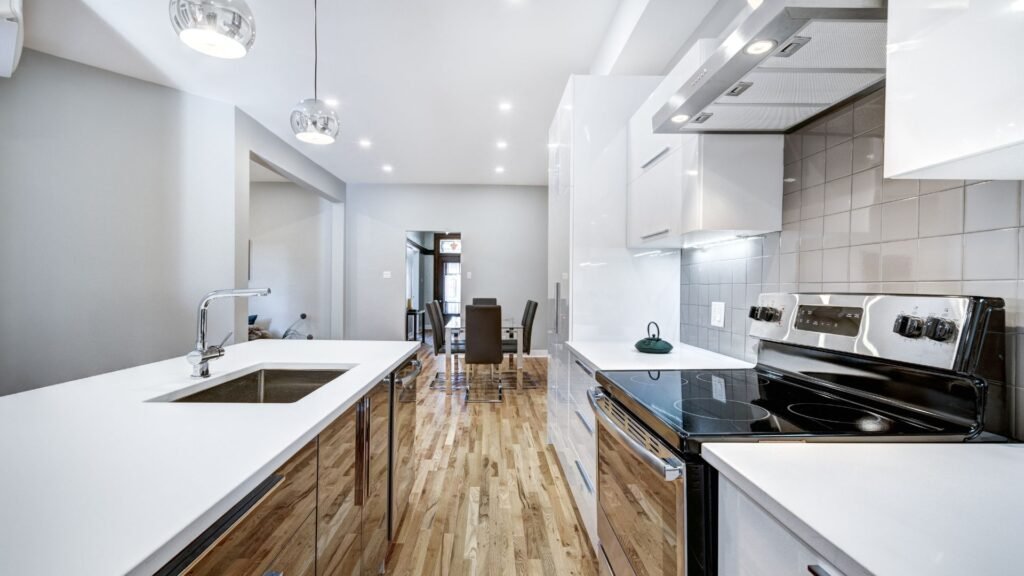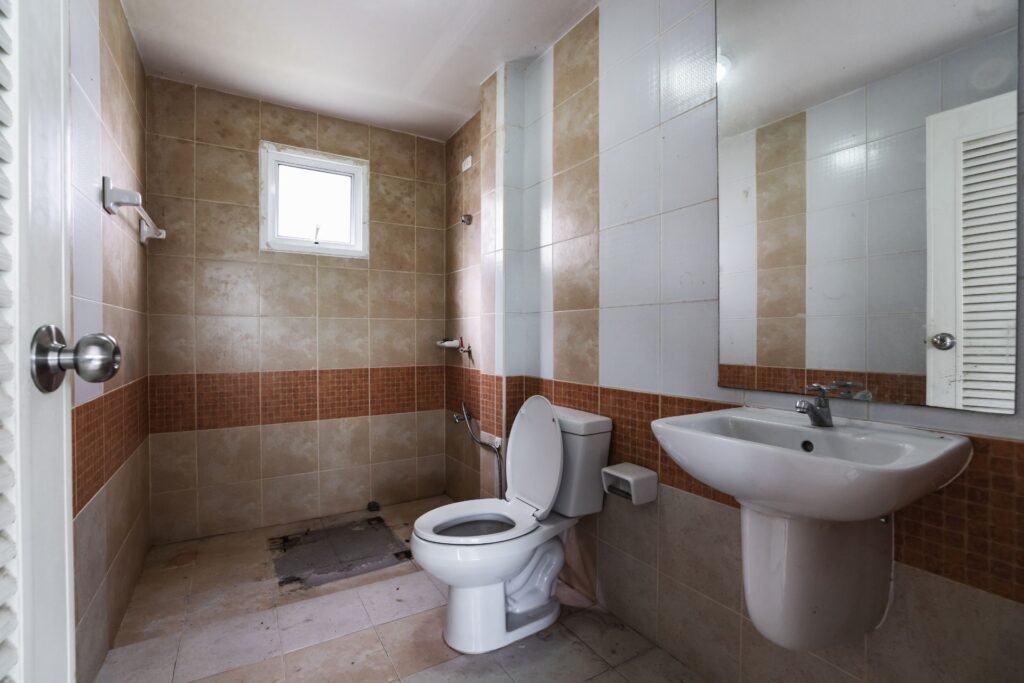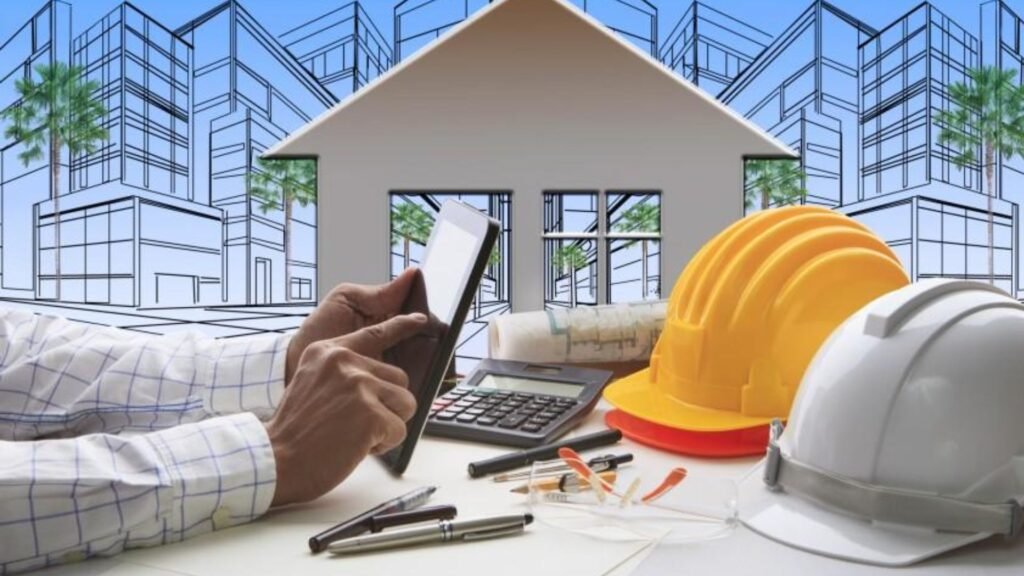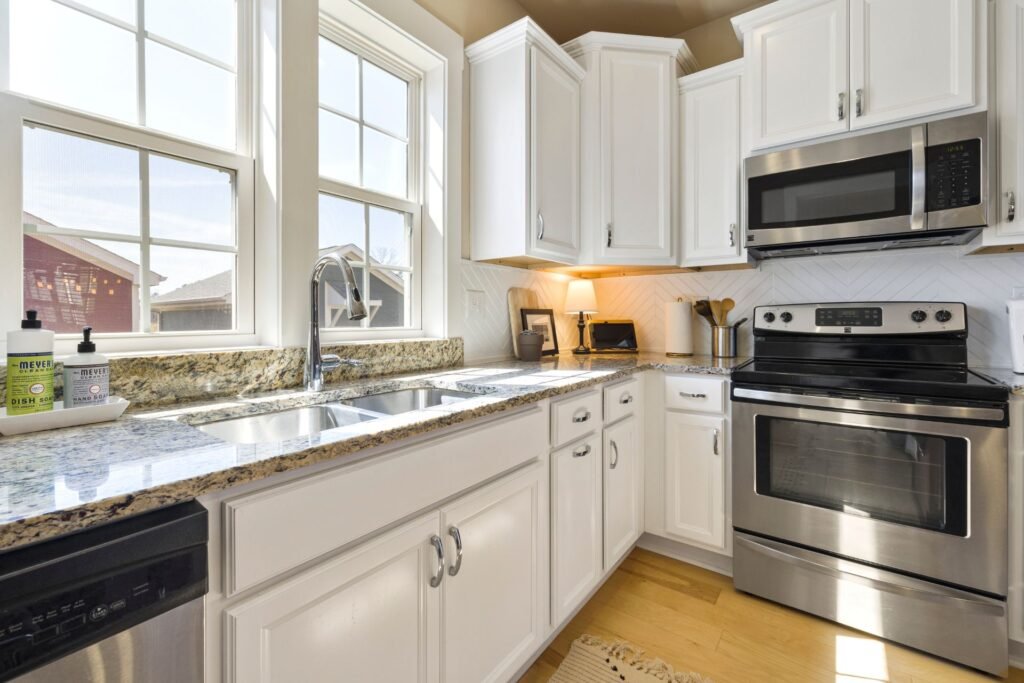Welcome to your comprehensive guide on how to save money on a bathroom remodel in New Zealand! Whether you’re dreaming of a fresh, modern look or just want to update a few key fixtures, remodeling a bathroom can be an exciting yet daunting task, especially when trying to stay within budget. The good news is that a stylish, functional bathroom makeover doesn’t have to break the bank. With the right planning, smart choices, and a few insider tips, you can achieve the bathroom of your dreams without overspending. In this blog post, we’ll explore practical, money-saving strategies tailored to Kiwi homeowners, from DIY options to smart material shopping, so you can enjoy a beautifully revamped space without the financial stress. Let’s dive in and get you started on your cost-effective bathroom renovation.
To save money on a bathroom remodel in New Zealand, focus on cost-effective strategies like keeping the existing layout to avoid expensive plumbing changes, repurposing fixtures instead of buying new ones, and incorporating DIY where possible. Shop smart by purchasing materials during sales or exploring second-hand options, and consider affordable alternatives such as vinyl flooring or large-format tiles. By planning ahead, setting a clear budget, and making thoughtful design choices, you can achieve a stylish, functional bathroom remodel without overspending.
Table of Contents
Plan Ahead To Avoid Costly Surprises When Remodeling
Remodeling your home can be an exciting yet overwhelming process, especially when you’re working with a limited budget. One of the best ways to avoid unnecessary expenses and project delays is to plan ahead meticulously. A well-thought-out plan helps you stay on track, prioritize what matters most, and handle unexpected surprises without breaking the bank.
Why Good Planning Prevents Unnecessary Costs
Imagine starting a home renovation without a clear roadmap. Costs can spiral out of control, and your project can face delays, especially when unexpected issues arise. Solid planning helps ensure you’re prepared for all scenarios. It forces you to think critically about your needs, helps you set realistic expectations, and avoids last-minute changes that can add unnecessary costs.
As the saying goes, “A well-thought-out plan is your best friend when remodeling on a budget.” Taking the time to carefully plan out each aspect of your remodel can prevent you from making hasty decisions that could cost more down the line.
Define Your Priorities: What’s Essential vs. What’s Nice to Have
Before jumping into your renovation, it’s essential to define your priorities. This means taking a good look at your home and deciding which areas need immediate attention and which ones can wait. Focus on functional upgrades like plumbing, wiring, or fixtures before diving into aesthetic elements such as tiles, countertops, or vanities.
A great way to prioritize is to ask yourself questions like, “Do you really need a freestanding tub, or will a sleek new shower do the trick?” If your budget is tight, it might make more sense to focus on upgrades that improve the functionality of your space, leaving the decorative changes for later.
Get Multiple Quotes From Contractors
One of the most common mistakes homeowners make is going with the first contractor they find. To avoid overspending, it’s crucial to gather multiple quotes from contractors. Getting at least three quotes allows you to compare prices, understand the scope of work, and choose the best option that fits your budget.
Create a Realistic Budget and Add a Buffer
Budgeting for a remodel isn’t just about tallying up the cost of materials and labor. Unexpected expenses can and will pop up whether it’s discovering mold behind the walls or needing to upgrade an outdated electrical system. To avoid financial stress, create a realistic budget that includes a 10-15% buffer for those unforeseen expenses.
By doing so, you can stay flexible and tackle unexpected challenges without compromising on your project. And remember, sticking to your plan and budget is key to achieving your dream space without going overboard.
Planning is essential to avoiding costly surprises in any home renovation project. By prioritizing functionality over aesthetics, gathering multiple quotes, and building a buffer into your budget, you set yourself up for success. With a solid plan in place, you can turn your renovation dreams into reality without blowing your budget.

DIY Where You Can But Know When To Hire A Pro
Undertaking home improvement projects can be exciting and budget-friendly, especially when you decide to take on some tasks yourself. However, it’s crucial to understand which jobs are DIY-friendly and when it’s best to call in a professional. Knowing where you can save money and when it’s necessary to hire an expert can make a huge difference in your project’s outcome.
Advantages of DIY
One of the biggest advantages of DIY is the potential to save significantly on labor costs. Labor can often account for a substantial portion of a renovation budget, so handling some tasks yourself can leave more room for higher-quality materials or additional upgrades.
For instance, if you’re comfortable with basic DIY skills, tasks like painting, demolition, or even tiling can be within your wheelhouse. These jobs don’t require specialized knowledge and are often manageable with the right tools and preparation. By taking these on yourself, you can reduce the overall expense of your project while adding a personal touch to your home.
DIY-Friendly Tasks for Homeowners
There are plenty of tasks that most homeowners can easily take on with minimal risk and great results. Here’s a list of common DIY-friendly tasks that you could handle yourself.
- Painting walls: A fresh coat of paint can dramatically transform a room, and with the right tools, even a beginner can achieve professional-looking results.
- Installing fittings: Simple installations, like hanging towel racks or shelves, are perfect for DIYers and can add functional style to your home.
- Assembling flat-pack furniture: Putting together vanities or cabinets from flat-pack kits is straightforward, often requiring just basic tools like a screwdriver and an instruction manual.
If you’re unsure how to tackle any of these tasks, there’s no shortage of free resources to guide you. Platforms like YouTube offer countless tutorials that break down these jobs step by step. With a bit of patience and practice, you can feel like a seasoned pro, even if it’s your first DIY project.
Know Your Limits
While it’s tempting to handle every aspect of a renovation yourself, it’s crucial to know when to step back and hire a professional. Some tasks demand specialized knowledge and equipment to ensure safety, compliance with local building codes, and long-term reliability.
For example, plumbing and electrical work are two areas where it’s essential to bring in licensed tradespeople. Plumbing mishaps can lead to leaks or water damage, and faulty electrical wiring can pose serious fire hazards. Professionals in these fields are trained to adhere to stringent safety standards and ensure that all installations are up to code, preventing potentially costly or dangerous mistakes down the line.
If you’re unsure whether a job requires professional expertise, err on the side of caution. It’s always better to invest in professional help for technical tasks than to risk costly errors.
Cost-Saving Tip: Mix DIY with Professional Work
One of the smartest strategies to balance cost savings with quality results is to mix DIY tasks with professional work. For example, you could handle the simpler, more manageable tasks like painting or furniture assembly, but hire pros for more complex jobs such as plumbing, electrical installations, or structural work.
This hybrid approach allows you to cut labor costs without compromising on safety or craftsmanship. For instance, you might take care of demo work or prep surfaces for painting, then leave intricate tile work or electrical setups to skilled tradespeople.
By knowing your limits and selectively choosing which jobs to DIY, you can maximize savings while ensuring your home renovation is completed to a high standard.
DIY can be a fantastic way to reduce costs and add a personal touch to your project. However, understanding when to bring in professionals is key to a successful outcome. Stick to simpler tasks that match your skill level, and don’t hesitate to hire pros for the more technical jobs. This balance ensures your home improvement project stays on budget and is completed safely and efficiently.

Repurpose Or Refresh Instead Of Replacing
Renovating your bathroom doesn’t always have to mean a complete overhaul or a big budget. By repurposing and refreshing what you already have, you can transform the space in a cost-effective way, without compromising on style or functionality. Here are some smart tips to help you update your bathroom without breaking the bank.
Reuse Existing Fixtures
One of the easiest ways to save money during a bathroom renovation is to reuse key fixtures like the toilet, bathtub, or vanity, especially if they’re still in good working condition. Often, these items just need a bit of attention to bring them back to life.
For example, instead of replacing your bathtub, consider giving it a thorough cleaning and replacing the grout around it. Over time, grime and mildew can accumulate, making the tub look outdated. However, a little elbow grease and fresh grout can give it a whole new appearance. As the saying goes, “Sometimes, all your old bathtub needs is a good scrub and some new grout to make it shine again!”
Refurbish Cabinets and Fixtures
Instead of replacing your bathroom cabinets or vanity, why not give them a fresh look by refurbishing. A simple coat of paint or refacing the cabinet doors can completely transform the space without the high cost of purchasing new ones. This approach allows you to update the style of your bathroom while keeping the layout intact.
Painting cabinets in a bold color can create a modern, trendy feel, or you could opt for neutral tones for a more timeless look. As a budget-friendly tip, “A simple coat of paint on your cabinetry can completely transform the look of your bathroom for a fraction of the cost of buying new ones.”
Upgrade Fixtures Affordably
If your bathroom fixtures, such as taps, showerheads, or handles, are looking dated, swapping them out for more modern, affordable options is a great way to refresh the room without a complete remodel. Local hardware stores like Bunnings or Mitre 10 in New Zealand offer a wide range of stylish yet affordable fixtures to suit any design preference.
New fixtures not only enhance the aesthetics but can also improve functionality, such as opting for water-saving taps and showerheads. Upgrading small details like this can significantly improve the overall look of your bathroom with minimal investment.
Cost-Effective Lighting Solutions
Lighting can make a huge difference in a bathroom, both in terms of style and energy efficiency. Replacing old lighting fixtures with new energy-efficient LED lights can help create a brighter, more modern look while also saving on your energy bills in the long run.
LED lighting is not only affordable but also easy to install. Additionally, you’ll reduce long-term energy consumption, making it a smart investment for any homeowner. Switching to LED lighting allows you to save on electricity costs and enjoy a brighter, more inviting bathroom.
By choosing to repurpose and refresh existing elements in your bathroom, you can achieve a stunning renovation without the need for a complete replacement. Whether it’s reusing functional fixtures, refurbishing cabinets, or upgrading to affordable alternatives, these budget-friendly tips can help you create a bathroom that feels brand new without overspending.
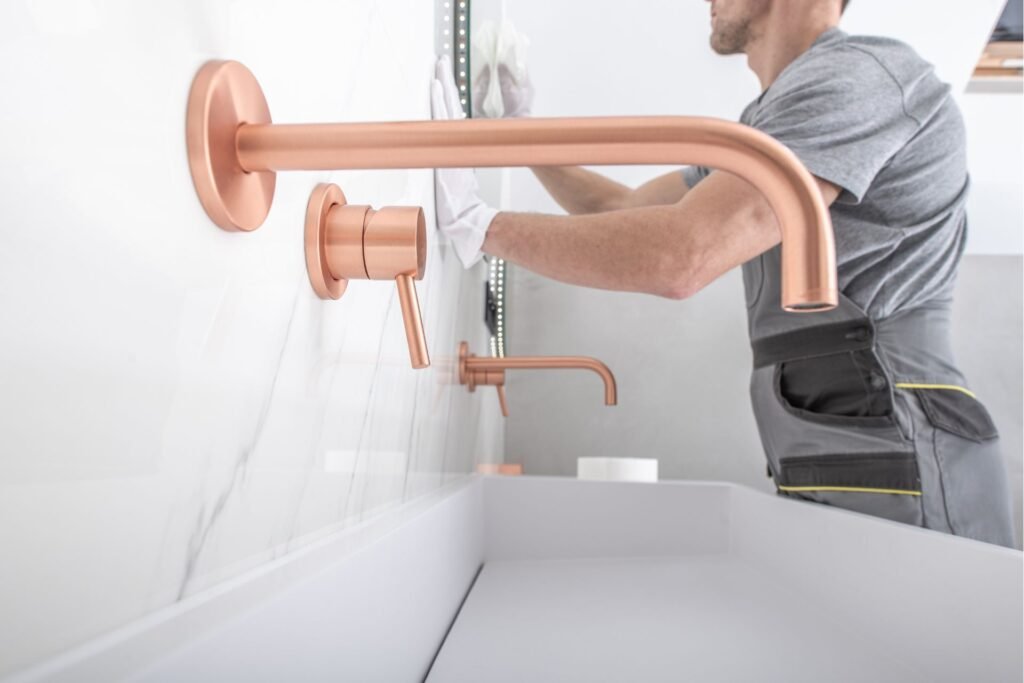
Shop Smart For Materials
When planning a home renovation, one of the biggest costs comes from the materials you use. But, with some smart shopping strategies, you can keep costs down without sacrificing quality. Here’s how you can make the most of your budget when buying materials for your next renovation project.
Buy During Sales
One of the easiest ways to save money on materials is by waiting for seasonal sales or special promotions. Retailers often offer deep discounts during times like Black Friday, end-of-year clearances, and holiday weekends. Planning your purchase around these sales can significantly cut down your costs.
Example: “Hold off on purchasing bathroom fixtures, tiles, and other big-ticket items until major sales like Black Friday. This is when you can snag high-quality materials at a fraction of the original price.”
By being strategic and patient, you’ll avoid paying full price for the things you need, allowing your budget to stretch further.
Explore Second-Hand Options
Another excellent way to save on renovation costs is by exploring second-hand options. Platforms like Facebook Marketplace, Trade Me, and Habitat for Humanity ReStores are great places to find pre-loved building materials, fixtures, and appliances. Often, these items are in excellent condition and come at a fraction of the cost of new ones. Plus, opting for second-hand materials is also an environmentally friendly choice, as it reduces waste and promotes sustainability.
Example: “You’d be amazed at the gems you can find when shopping for second-hand materials. From vintage lighting fixtures to gently used tiles, buying pre-loved is both eco-friendly and wallet-friendly.”
Not only will you save money, but you might also come across unique items that add character to your renovation project.
Consider Alternative Materials
High-end materials like marble countertops and ceramic tiles can quickly drive up the cost of a renovation. Luckily, there are many affordable alternatives that still provide a stylish and durable finish. For example, vinyl tiles are an affordable alternative to ceramic, offering similar aesthetics at a lower cost. Similarly, acrylic countertops can mimic the luxurious look of marble but are far more budget-friendly and easier to maintain.
Example: “Modern vinyl flooring has come a long way. It’s not only affordable and durable but can also mimic the look of pricier options like stone or ceramic tiles, making it a fantastic choice for those on a tight budget.”
By opting for these alternatives, you can achieve the look you want without the hefty price tag.
When it comes to home renovations, smart shopping for materials is key to staying within your budget. Whether you’re timing your purchases during sales, exploring second-hand treasures, or choosing budget-friendly alternatives, these strategies can help you achieve your dream space without breaking the bank.

Rethink The Layout To Save Big On Plumbing Costs
When planning a bathroom renovation, it’s tempting to dream big and imagine a completely new layout. However, if you’re working with a tight budget, moving plumbing fixtures such as the toilet, shower, or sinks can significantly increase your expenses. Here’s why keeping the layout the same can save you a lot of money and hassle.
Keep the Layout the Same
One of the most expensive mistakes homeowners make during a bathroom remodel is moving plumbing fixtures. Although a new layout may look great on paper, the reality is that relocating a toilet, shower, or sink requires a major overhaul of the plumbing system. This involves not only moving pipes but also potentially tearing up floors and walls to accommodate the new routes for water and waste lines. These changes demand skilled labor and additional materials, which can put a significant dent in your renovation budget.
To put it simply, every inch you move a fixture increases costs. A small shift in the location of a toilet or sink may seem like a minor adjustment, but the work involved in rerouting water lines, drains, and vent stacks can add up quickly. So, if you’re looking to keep your bathroom remodel on budget, it’s often better to keep the plumbing where it is.
Maximize the Existing Plumbing
Rather than getting caught up in the idea of moving everything around, consider how you can maximize the layout you already have. You can still achieve a fresh and modern look without the extra cost of re-plumbing. Focus on upgrading the fixtures themselves—new faucets, showerheads, or sinks can give the space an entirely new feel without changing the overall layout.
Upgrading your fixtures within the existing framework is not only more cost-effective, but it also reduces the time and effort required to complete the renovation. This way, you avoid potential delays and additional labor costs while still achieving an updated look that reflects your personal style.
Cost-Saving Tip
If you’re working on a budget, focus on small, impactful changes rather than a complete overhaul. Upgrading taps, fittings, and finishes can modernize your bathroom without the need for major structural changes. For instance, swapping out outdated brass fixtures for sleek chrome or matte black designs can give your bathroom a contemporary feel without the hefty price tag associated with moving plumbing.
Additionally, consider options like adding new cabinetry, installing a modern vanity, or updating lighting fixtures. These changes can dramatically improve the functionality and aesthetic of your bathroom without requiring a rework of the entire space.
While a new bathroom layout may be appealing, the costs associated with moving plumbing fixtures can quickly add up. By keeping the layout the same and focusing on upgrading the existing fixtures, you can save big and still achieve a beautifully updated bathroom. Small, strategic changes can make a big impact on both the design and your wallet.

Save On Tiles And Flooring
When it comes to renovating your home, tiles and flooring can quickly become a significant expense. However, with a few clever strategies, you can achieve the look you want without overspending. Here are some practical tips to help you save on tiles and flooring while still creating a stunning space.
Tile Selectively
One of the easiest ways to cut down on tile costs is by tiling only the most visually impactful areas, like the shower or backsplash, and using more affordable materials such as paint or other alternatives on the remaining walls.
Instead of tiling an entire bathroom or kitchen from floor to ceiling, consider focusing on areas that will make the biggest design statement. For example, the shower area or kitchen backsplash can be tiled with stylish options, while the other walls can be painted with high-quality, water-resistant paint.
This approach not only saves money on materials but also reduces the cost of labor, as tiling larger surfaces can be time-consuming and expensive.
Tip: “Instead of tiling from floor to ceiling, save on costs by focusing on the shower and using high-quality paint for the rest.”
Use Large Tiles
Another excellent way to cut costs is by opting for larger tiles. Larger tiles are increasingly popular in modern designs, and they also offer practical benefits. Since they cover more surface area, you’ll need fewer tiles overall, which means fewer grout lines and less labor-intensive work for your installer.
Large-format tiles can create a sleek, contemporary look while helping you save money on both materials and installation. Plus, fewer grout lines mean less maintenance over time, making large tiles a win-win for both aesthetics and budget.
Tip: “Large-format tiles are not only on trend, but they can also save you money since you need fewer of them.”
Explore Alternative Flooring Options
If you’re looking to save on flooring costs, consider more affordable alternatives like vinyl or laminate. These materials have come a long way in recent years, offering water-resistant options that are both durable and stylish. Vinyl planks, for example, can mimic the appearance of wood or stone at a fraction of the cost, making them an excellent choice for budget-conscious homeowners.
Vinyl flooring is especially ideal for high-traffic areas like kitchens, bathrooms, or even basements, where moisture resistance is key. Laminate is another great option, providing the look of hardwood at a lower price point and with less maintenance required.
Tip: “Vinyl planks can give you the look of wood or stone without the hefty price tag.”
By being selective about where you tile, opting for larger tiles, and exploring alternative flooring materials, you can significantly reduce the cost of your renovation without sacrificing style or quality. These budget-friendly options allow you to create a beautiful space that aligns with your financial goals, proving that high-end design doesn’t have to come with a high price tag. Start your renovation project with these tips in mind, and watch how small changes can lead to big savings.

Be Energy-Efficient For Long-Term Savings
When it comes to designing or upgrading your bathroom, it’s easy to focus on aesthetics, but thinking about long-term savings is just as important. By integrating energy-efficient solutions, you not only reduce your environmental footprint but also lower your utility bills. Let’s dive into a few practical ways to make your bathroom more energy-efficient.
Install Water-Efficient Fixtures
One of the simplest yet most effective ways to save on water bills is by installing water-efficient fixtures. Today’s market offers a wide range of options, including water-saving taps, showerheads, and dual-flush toilets. These fixtures use less water without sacrificing performance, ensuring you’re conserving resources with every use.
For example: Switching to a low-flow showerhead can reduce water usage by up to 40%, which adds up to significant savings over time. While the upfront cost might seem higher, the long-term benefits outweigh the initial investment. You could save hundreds of dollars annually, making these fixtures a smart choice for both your wallet and the environment.
Upgrade to Energy-Efficient Lighting
Another area where you can make a noticeable difference is lighting. Traditional incandescent bulbs not only consume more electricity but also have a shorter lifespan compared to their energy-efficient counterparts. By switching to LED lighting, you can cut down on energy consumption significantly.
LED lights use about 75% less energy than incandescent bulbs and can last up to 25 times longer. This means you’ll be replacing bulbs less frequently while saving on your electricity bill. LED lighting is ideal for bathrooms because it provides bright, clear illumination—perfect for grooming, applying makeup, or simply relaxing in the bath after a long day.
Consider Energy-Efficient Heating Options
Heating your bathroom can be one of the more energy-intensive aspects of your home, especially during colder months. Fortunately, there are several energy-efficient heating options designed specifically for bathrooms.
For example, underfloor heating is a great choice for those looking to maintain a warm, comfortable bathroom environment without using a lot of energy. Because it heats from the ground up, it requires less energy to maintain a consistent temperature. Another popular option is heated towel rails, which not only keep your towels warm but can also serve as a supplemental heating source for the entire room. Both of these options can be controlled with timers, ensuring they’re only in use when needed, further maximizing energy savings.
Being energy-efficient in your bathroom doesn’t just benefit the planet; it’s a smart financial move that can lead to substantial savings over time. Whether you’re investing in water-saving fixtures, upgrading your lighting, or choosing energy-efficient heating options, these simple changes can make a big impact. Take the steps today to create a bathroom that’s both luxurious and cost-effective for the long haul.
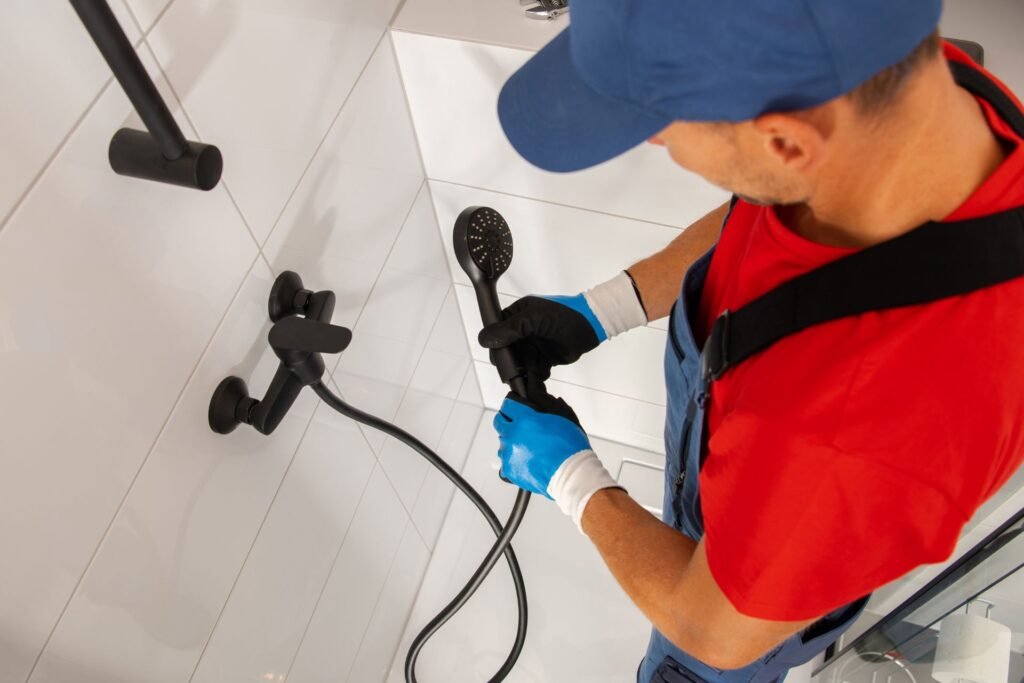
FAQs: About How To Save On Bathroom Remodel NZ
What is the average cost of a bathroom remodel in NZ?
The average cost of a bathroom remodel in New Zealand can vary significantly depending on the scope of the renovation. On average, a mid-range bathroom remodel costs between $15,000 and $25,000. High-end renovations can exceed $40,000, while a more budget-friendly renovation can be done for under $10,000 by making smart choices in materials and DIY labor.
How can I save the most money on a bathroom remodel?
To save the most money on a bathroom remodel, focus on the following:
Keep the existing layout to avoid costly plumbing changes.
DIY where possible, such as painting and tiling.
Reuse existing fixtures if they are still functional.
Shop for materials during sales or consider second-hand options.
Opt for affordable alternatives like vinyl flooring and large-format tiles to reduce installation costs.
Is it cheaper to renovate a small bathroom?
While small bathrooms may require fewer materials, they can still be costly due to labor and the need for compact, specialized fixtures. However, you can save money by limiting the amount of tiling, keeping the layout the same, and selecting affordable materials. DIY can also help reduce costs for small bathrooms.
Can I renovate my bathroom myself?
Yes, many parts of a bathroom remodel can be done DIY, especially if you’re comfortable with tasks like painting, tiling, or installing basic fittings like towel racks. However, for more technical tasks such as plumbing and electrical work, it’s essential to hire licensed professionals to ensure everything is done safely and up to code.
How long does a bathroom remodel typically take?
The timeline for a bathroom remodel depends on the scope of the project. A simple remodel can take 2-3 weeks, while a more extensive renovation involving plumbing changes or custom installations may take up to 6-8 weeks. Planning and sourcing materials in advance can help reduce delays.
Is it expensive to move plumbing in a bathroom remodel?
Yes, moving plumbing can significantly increase the cost of a bathroom remodel. Moving items like the toilet, shower, or sink often requires additional plumbing work, which can be expensive. It’s more cost-effective to keep the plumbing layout the same and upgrade the fixtures instead.
What are some affordable alternatives to expensive materials for bathroom remodeling?
There are several budget-friendly alternatives to high-end materials that can still provide a stylish look.
Vinyl flooring instead of ceramic or porcelain tiles.
Laminate or acrylic countertops instead of natural stone.
Prefabricated shower enclosures instead of custom-tiled showers.
Using large-format tiles, which cover more area with fewer grout lines, reducing both material and labor costs.
What are the most important areas to splurge on during a bathroom remodel?
If you’re going to splurge in a few areas, prioritize quality plumbing fixtures, waterproofing, and ventilation systems. These are critical to the long-term functionality of your bathroom. Also, if budget allows, investing in water-efficient fixtures can save you money on utilities in the long run.
How do I choose the right contractor for my bathroom remodel?
To choose the right contractor for your bathroom remodel, follow these steps.
Get at least three quotes from different contractors to compare prices and services.
Check their references and look for reviews or testimonials from previous clients.
Ensure they are licensed and insured.
Ask about their experience with bathroom renovations specifically and request to see examples of past work.
How can I make my bathroom remodel more eco-friendly?
To make your bathroom remodel more eco-friendly, consider the following.
Install water-saving fixtures like low-flow toilets and water-efficient showerheads.
Use sustainable or recycled materials, such as bamboo cabinets or recycled glass tiles.
Choose energy-efficient lighting, such as LED bulbs.
Ensure proper ventilation to prevent mold, reducing the need for chemical cleaning products.
Conclusion
In summary, saving money on a bathroom remodel is entirely possible with a bit of foresight and creativity. By planning ahead, taking on some DIY tasks, reusing existing fixtures, shopping smart for materials, and incorporating energy-efficient options, you can achieve a beautiful and functional bathroom without overspending. A remodel doesn’t have to be a financial burden with the right approach, you can transform your space while staying within your budget. Start planning your cost-effective bathroom remodel today, and feel free to share your journey and tips in the comments below.
About the Author:
Mike Veail is a recognized digital marketing expert with over 6 years of experience in helping tradespeople and small businesses thrive online. A former quantity surveyor, Mike combines deep industry knowledge with hands-on expertise in SEO and Google Ads. His marketing strategies are tailored to the specific needs of the trades sector, helping businesses increase visibility and generate more leads through proven, ethical methods.
Mike has successfully partnered with numerous companies, establishing a track record of delivering measurable results. His work has been featured across various platforms that showcase his expertise in lead generation and online marketing for the trades sector.
Learn more about Mike's experience and services at https://theleadguy.online or follow him on social media:


